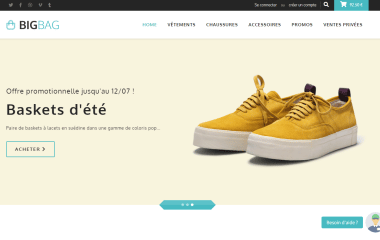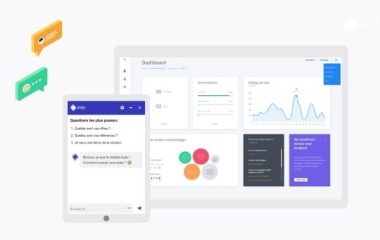A callbot is a conversational voice robot that can be accessed via a telephone number. Phone remains the preferred channel for users (1st or 2nd place according to studies) and the automation of a certain number of use cases for companies with large volumes of calls, is justified by financial imperatives and user expectations. According to a Forrester study, 72% of consumers prefer to solve problems by themselves, rather than contact someone at customer service. Callbots improve the customer experience (reduced waiting times, simplified processes, optimised direction, etc.) and also improve operational efficiency. This has a positive impact on costs. Callbots are particularly widespread in the insurance, telephone, transport, e-commerce and tourism industries, whether at the beginning of the relationship (information request, order processing, tracking, etc.), or at the end for claims and after-sales-services.

Like all our bots, callbots are based on natural language dialogue technology. From a technical standpoint, they function like chatbots, with the addition of speech recognition (STT: Speech To Text) and speech synthesis (TTS: Text To Speech). In terms of telephony, they can connect to your existing IVR or replace it. Callbots understand user intents phrased in their own words. They can manage punctuation and pronunciation, as well as SSML tags (pauses, reading of numbers, dates and times, pronunciation instructions). Special developments also allow to manage speech interruptions, phrasings used only in the spoken language, etc. Callbots can also provide generic and personalised information, by easily interconnecting with your software (CRM, ticketing tool, booking system, etc.). They can then trigger actions such as opening a ticket or a claim and sending a confirmation email or SMS.
There are lots of different specific use cases, such as making a claim, signing up to a contract, banking (checking balance, cancelling a card, ordering a cheque book, etc.). The elements used in conversational strategy apply to both callbots and chatbots. Let’s take a look at 2 examples involving making appointments via a callbot.
Date Management by the bot
This applies to lots of different sectors. For example, booking a ticket for a train or a show, a table at a restaurant, an appointment with a customer advisor, or enquiring about the time for a screening… Whether to get information about opening hours, service times, or even make an appointment, callbots use lots of different functionalities.
Ideally, the callbot is given a specific time and date. In a conversation – whether via text or voice -, users may be precise and unambiguous (except perhaps 15/09 or 09/15 depending on if they’re from the UK or the US… 😊 – or use vague expressions, such as “mid-month”. The algorithm has to understand and dynamically manage these expressions to make them specific. For example, tomorrow after the 15th is not tomorrow after the 16th… The software also needs to include pre-configured expressions such as “late morning” or “early in the week” to make suitable suggestions.
All of these considerations cannot, of course, be translated literally. Certain adaptations need to be made to ensure the same level of understanding in another language.
Dydu has worked on corporate concierge and transport project, which has enabled us to build a certain expertise on the matter. Today, all our clients can benefit our know-how.
Callbot Recognition of Proper Nouns and References
We’re always striving to perfect our solution to answer frequent requests. In the speech recognition field, callbots are often positioned at the beginning of the customer relationship, and more and more scenarios require them to qualify the calls: reason for calling, subject identification (order, package, legal entity or actual person, etc.), authentication, etc.
Although decision trees allow to easily handle requests, identification involves the understanding of proper nouns, booking or file numbers including letters and/or numbers, etc. The callbot has to be able to manage accents, background noise, pronunciation difficulties etc. Dydu has worked with CATIE (The Nouvelle-Aquitaine Digital Technology Centre) to improve the software’s spelling understanding.
Let’s return to our example. To confirm an appointment, you need to provide your name after choosing a time slot.
In most cases, the callbot is connected to a call centre. This means that, if necessary -i.e. if the callbot can’t handle the call from beginning to end -, the operator already has all the information they need to quickly and efficiently solve the caller’s problem.
Once again, conversational strategy and the autonomy to manage and optimise your solution makes all the difference. Give it a try!







